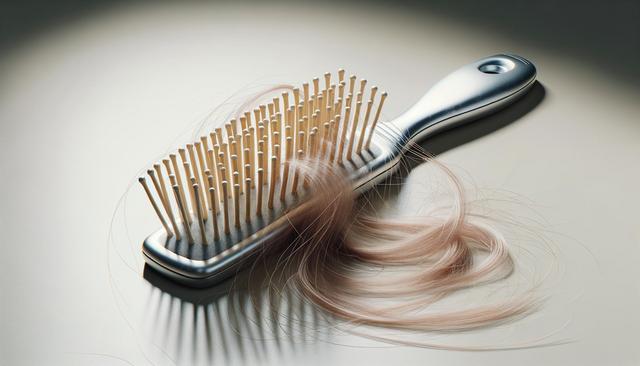What Causes Hair Loss for Women?
Hair loss for women can be triggered by a variety of factors, ranging from hormonal fluctuations to lifestyle choices. Unlike male-pattern baldness, which typically follows a predictable pattern, female hair loss tends to be more diffuse or focused on specific areas like the temples or crown.
Common causes include:
- Hormonal changes due to pregnancy, menopause, or thyroid disorders
- Genetic predisposition (androgenetic alopecia)
- Chronic stress and anxiety
- Nutritional deficiencies, especially iron, zinc, and vitamin D
- Medical treatments such as chemotherapy
- Hairstyling habits that involve excessive heat or tight hairstyles
Understanding the root cause of hair loss is essential to choosing the most appropriate hair loss treatment for women. Consulting with a healthcare provider or dermatologist is often the first step in determining the underlying reason and crafting a tailored approach.
Signs and Patterns of Women’s Hair Thinning
Women may experience hair thinning differently than men, with common symptoms including increased hair shedding, noticeable scalp visibility, or a widening part. One area that particularly concerns many is women’s hair thinning around temples, which can appear more prominent with certain hairstyles or lighting.
Crown stress female hair loss is another frequent pattern, where thinning occurs on the top of the head. This type of hair loss is often associated with stress or hormonal shifts. In some cases, it may progress gradually and be difficult to detect early on without careful attention.
Key signs to watch for include:
- Hair that breaks easily or appears finer over time
- Increased hair left on pillows, brushes, or in the shower
- Reduced ponytail volume
- Visible scalp in previously dense areas
Early detection can make a significant difference in the success of hair regrowth for women. Keeping track of changes and seeking professional advice promptly can help minimize long-term loss.
Effective Hair Loss Treatment for Women
Finding the best hair loss treatment for female individuals depends largely on the cause, severity, and duration of the condition. There is no single solution that works for everyone, but a range of options exist that have shown positive results for many women.
Some common treatments include:
- Topical treatments designed to stimulate scalp circulation and follicle activity
- Oral supplements containing biotin, iron, or other essential nutrients
- Prescription medications that address hormonal imbalances
- Laser therapy devices that promote hair regrowth for women
- Lifestyle changes such as stress reduction and improved sleep
For those facing more advanced thinning, dermatologists may recommend procedures such as platelet-rich plasma (PRP) therapy or microneedling. In some cases, a combination of approaches yields better outcomes, especially when addressing both internal and external contributors to hair loss.
Choosing the Best Hair Treatment for Women’s Hair Loss
When selecting the best hair treatment for women’s hair loss, it’s important to look beyond marketing claims and focus on scientifically-backed solutions. Reading product labels, understanding active ingredients, and checking for clinical studies can provide insight into their potential effectiveness.
Here are some factors to consider:
- Your specific hair loss pattern (e.g., diffuse thinning vs. patchy loss)
- Duration of hair loss and whether it’s acute or chronic
- Underlying health conditions or medications
- Your lifestyle and ability to maintain a treatment regimen
Some women may benefit from simple dietary adjustments, while others require more targeted interventions. A consultation with a trichologist or dermatologist can help narrow down the most suitable options based on individual needs and medical history.
Supporting Hair Health and Preventing Future Loss
Preventing future hair loss involves a combination of healthy habits, regular care, and proactive monitoring. While some causes of hair loss are beyond control, many lifestyle factors can be adjusted to support a healthier scalp and stronger strands.
Helpful practices include:
- Maintaining a balanced diet rich in protein, omega-3 fatty acids, and vitamins
- Using gentle, sulfate-free shampoos and avoiding harsh chemical treatments
- Minimizing heat styling and avoiding tight hairstyles that pull on the roots
- Managing stress through techniques like yoga, meditation, or therapy
- Regular scalp massages to promote circulation and follicle health
Consistency is key when it comes to supporting hair regrowth for women. Even the most effective treatments take time to show results, so patience and persistence are essential components of any successful hair care plan.
Conclusion: Navigating Hair Loss with Confidence
Hair loss for women is a complex and often emotional experience, but understanding the causes and available treatments can empower individuals to take proactive steps. Whether you’re dealing with women’s hair thinning around temples or crown stress female hair loss, there are solutions that may help slow the process and encourage regrowth. By exploring the best hair treatment for women’s hair loss based on personal needs and professional guidance, many women find paths to healthier, fuller hair. Taking informed action early can make a meaningful difference in managing and potentially reversing hair loss.




Leave a Reply